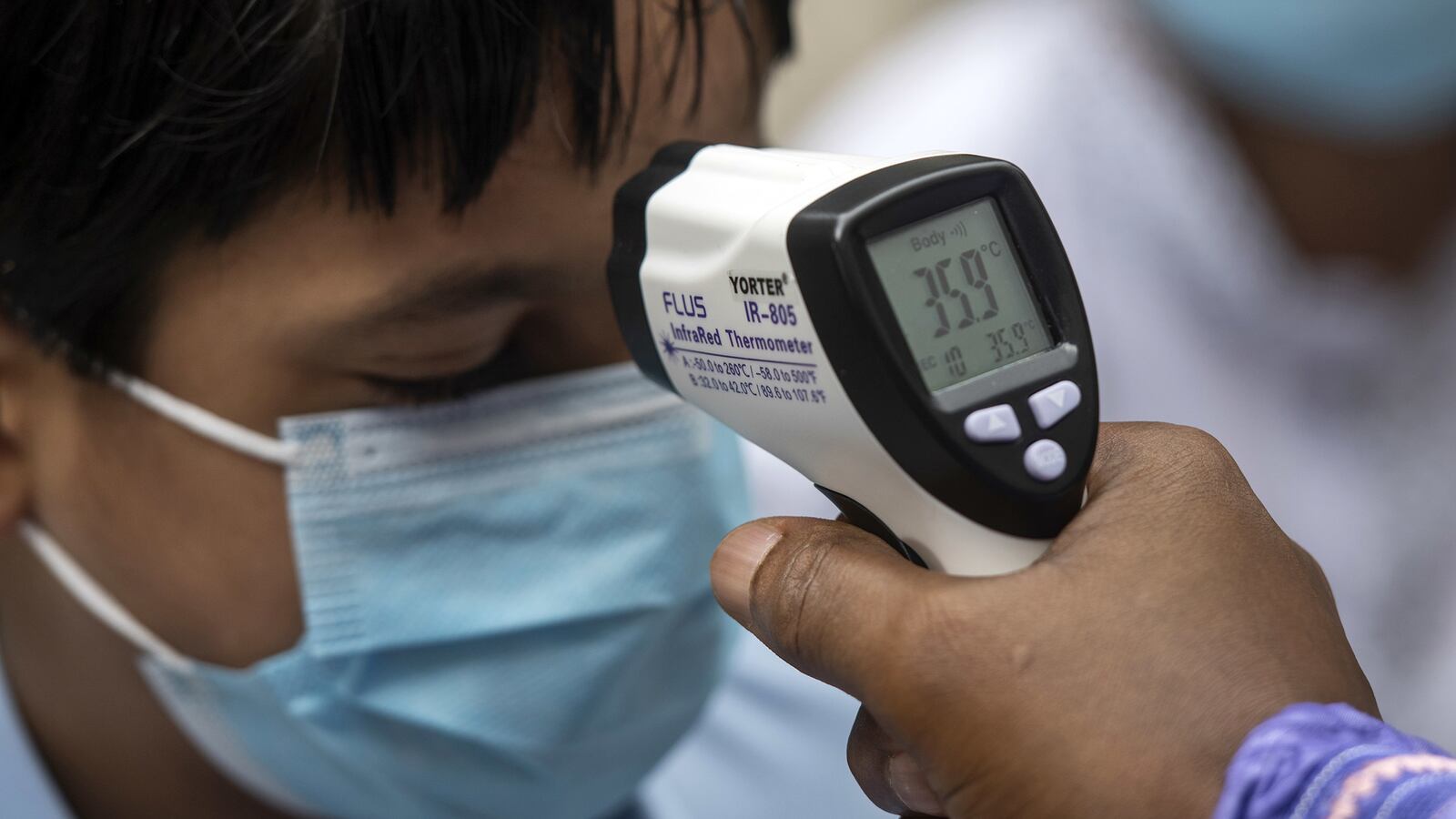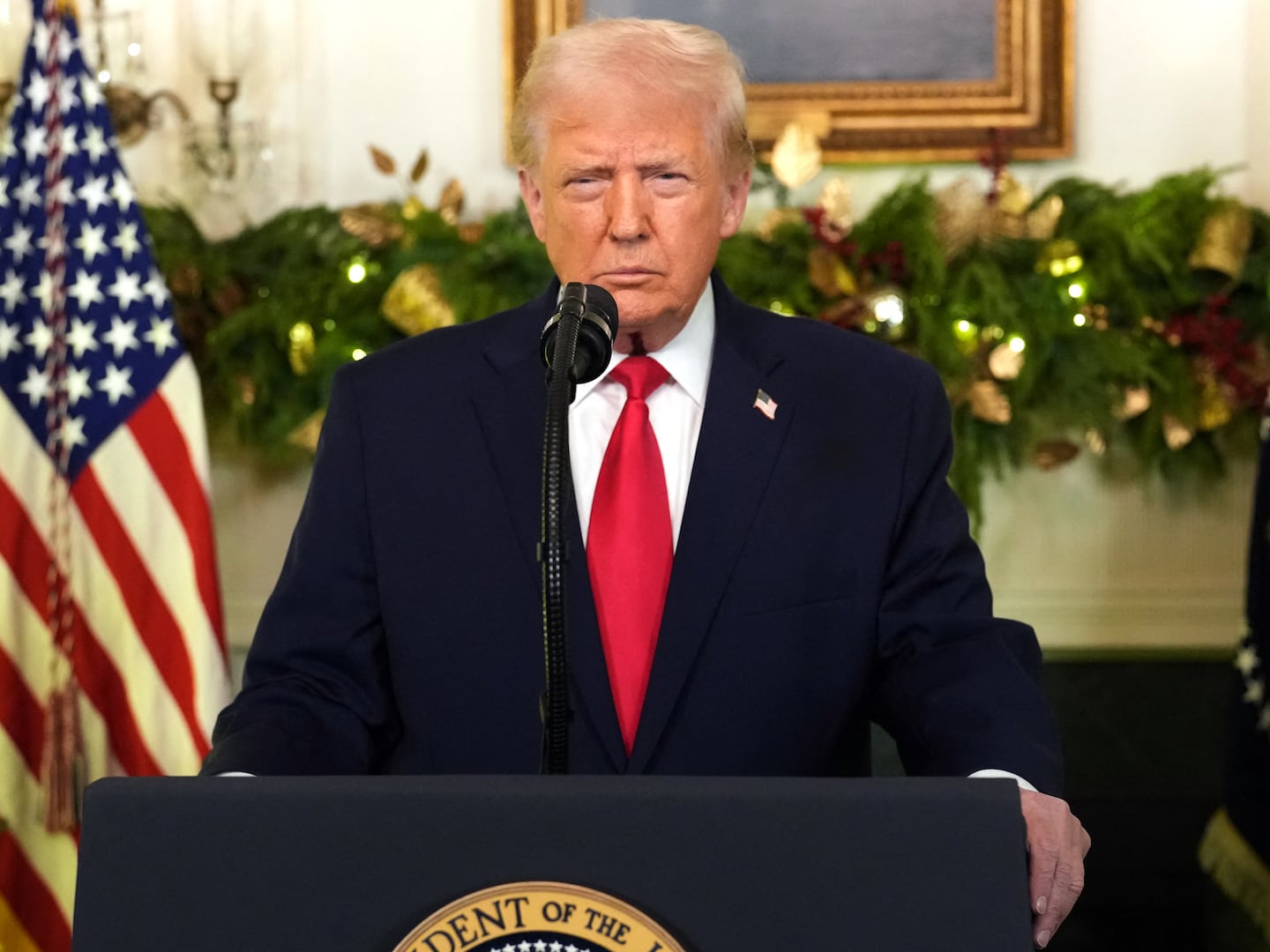HONG KONG—This city of 7.6 million, one of the most densely populated in the world, has recorded no local transmissions of the novel coronavirus for more than three weeks. Since the onset of the outbreak, Hong Kong has logged four deaths due to complications brought on by COVID-19; the last was in mid-March.
But as Hong Kong’s officials mull over easing border restrictions, governments in the region with much worse records are shaping post-COVID policies in technologically dystopian ways that may be here to stay in Asia and around the world.
Look no further than Singapore, where a yellow-and-black robot patrol dog now monitors human activity in a public park. It struts along jogging paths and issues recorded advisories to people who are not standing at least one meter apart from one another. “Spot,” as it was named by its developer Boston Dynamics, tells people “not to loiter” and breaks up gatherings in public places.
It’s beyond creepy, even if it's a publicity stunt, and it’s difficult to shake the uncanny feeling that variants of this creature with artificial intelligence could someday soon be issuing orders to human beings.
Even without robots, there is going to be constant scrutiny of who you meet, where you are, and what you’re doing, not only in the street, but when you’re in the privacy of your own home. And on the other end of the spectrum, where ideas about “herd immunity” are embraced with oblivious, reckless abandon, COVID-19 is wreaking havoc.
DIGITAL DYSTOPIAS
Some tech companies would have you believe that we can innovate ourselves out of the COVID-19 pandemic. Governments all over the world have adopted tech-driven surveillance and policing measures to track and steer their citizens, hoping to contain a virus that we still know little about.
The Singaporean government launched the first smartphone app that uses constant Bluetooth pings to log encounters between people. It’s called TraceTogether, and its contact tracing methodology is characterized as less invasive than the location-based surveillance that is conducted in, say, South Korea and Israel. But a local coder found that TraceTogether’s early version was “sending more data than necessary” to a government platform, rendering useless the anonymization that originally was promised. (TraceTogether was updated to improve privacy measures after the coder contacted the app’s developers.)
At least Singapore’s tracing app is used on a voluntary basis. India’s contact tracing app, Aarogya Setu, is compulsory for government workers and private sector employees, as well as people who live in areas under lockdown. Delhi may make the app mandatory for all air passengers taking off or landing in India when flights resume. Aarogya Setu functions much like Singapore’s app, but also issues color-coded health status designations—a measure first rolled out by Alibaba and Tencent, two of the biggest tech companies in China.
Even before the outbreak, we grudgingly (or willingly) shared our private data with tech companies, but the mass deployment of health status QR codes in China is the first time algorithms determine where people can go and what they can access. And in technical terms, it hasn’t been a consistently smooth process. Last week, a glitch happened in Hangzhou, where Alibaba is headquartered, causing clusters of healthy people to lose access to public transportation, public facilities, and even their workplaces.
Countries all over the world are designing their own COVID-19 apps or leaning on big tech to track, trace, and put up geofences. And those entanglements can be highly problematic—Alibaba’s health status app in China appears to share data with the police, according to analysis conducted by The New York Times. These programs take the erosion of privacy to new heights and could easily be paired with robot and drone patrols in the future.
And this, even though they don’t work as well as promised.
Singapore and South Korea had previously claimed success flattening their curves, with both governments crediting their respective digital tracking tools. But renewed outbreaks—in Singapore’s migrant worker dormitories and Seoul’s gaudy night clubs—might even hasten the mandatory adoption of new-generation of COVID-tech.
APOCALYPSE OF THE OBLIVIOUS
On the other end of the scale are those who claim that the pandemic is all hype or hoax.
A religious gathering in Malaysia that ran from February 27 to March 1 had around 16,000 attendees, leading to spikes of infections across Southeast Asia. Sweden’s deliberately lax containment measures feel much like a deadly experiment. A nation of 10.3 million people, it has 26,670 confirmed cases with more than 3,250 deaths as of Tuesday morning—roughly 322 deaths per million—which is the highest rate among Nordic nations and considerably greater than in the United States (247 per million).
The Netherlands is doing something like Sweden, calling it “intelligent lockdown.” It has 318 deaths per million, and the head of one intensive care unit in Amsterdam, Armand Girbes, expects more patients to head his way, overloading an ICU that is already at high capacity.
In South America’s most populous nation, Brazilian president Jair Bolsonaro has described COVID-19 as a “little flu,” and claimed that “Brazilians don’t catch anything... they already have the antibodies to keep it from spreading.” So far, more than 11,000 people have died, and the rate of infection appears to be rising astronomically, leading to predictions that Brazil could be the world’s next COVID-19 hotspot, with Rio soon to replace New York City as ground zero for the pandemic.
Tom Inglesby of the Johns Hopkins Bloomberg School of Public Health told The Atlantic that Brazil reported 3,700 new daily cases on April 23. Less than two weeks later, on May 6, new daily cases had more than tripled, to 11,896. The developments in Brazil “are really concerning,” Inglesby said.
Letting the contagion run wild might make some sense, despite the enormous human cost, if we could be sure that populations will develop “herd immunity.” That would make it increasingly difficult for the virus to spread across a community because so few vulnerable hosts would be available.
But it is not clear whether we can develop herd immunity against COVID-19, because it did not exist in humans before last year. It has not been established that those who recover from the disease are then safe from reinfection. In fact, there are patients in South Korea and China whose health was restored after falling sick with COVID-19, but still tested positive for the virus, making the choices of the Dutch and Swedish governments seem all the more risky.
Even if one bout with infection does confer some level of immunity, what that level is, how effective it might be, and how long it might last remain open questions.
The pandemic has also given cover to wingnuts around the globe to disseminate propaganda, perpetuate discriminatory ideas, or conflate inconvenience with oppression.
India’s Hindu nationalists are fomenting Islamophobic hatred by making false claims that Muslims are waging “corona jihad.” The term is attached to online videos allegedly showing Muslims spitting on fresh produce in markets and smearing their saliva on public surfaces, while blaming Muslims for bringing the pandemic to the subcontinent. Government officials called followers of the Islamic faith “human bombs,” and Muslims have been beaten up and barred from some towns and neighborhoods. This is happening in a country already suffering upheaval because of a citizenship law passed and ratified last December that discriminates against Muslims.
In Europe, conservatives within the Catholic church are interpreting common sense limitations on the celebration of mass that have been approved by Pope Francis as a conspiracy to curtail religious freedoms. There are echoes in America, where conservative personalities have all but branded the pontiff a heretic for observing scientific guidance, and the saga of American evangelical churches that refuse to close is a staple of the evening news.
A GOLDEN MEAN?
This isn’t the first time in recent history that Hong Kong has had to contend with new viruses. In 1997, an avian flu outbreak originating in Guangdong killed six people in the city, leading to the culling of 1.6 million fowl. And then, from 2002 to 2004, the SARS outbreak, which again was traced back to Guangdong, killed nearly 800 people, 299 of whom were in Hong Kong. The entire city wore masks. People stayed away from each other, and constantly sanitized shared surfaces at home and in public.
When a new coronavirus began to infect clusters of people in Wuhan in late December, memories of the avian flu and SARS flooded forth in Hong Kong. People realized that there could be months of inconvenience and exasperation ahead of them, but acknowledged that it was necessary, because the alternative was for hundreds, at least, to fall ill and die.
As border restrictions and social distancing policies ease in places that have managed to bring down the rate of infection, the new normal, at least for the foreseeable future, is to be prepared for our homes to function as classrooms, workplaces, (telemedical) clinics, and even (virtual) therapists’ offices if—when—a second wave hits.
Over the weekend, we already saw how Seoul suffered a surge of new infections when people became complacent. The same happened in Germany.
That attitude was present in Hong Kong, too, when bars reopened last Friday and many people—many of them expats—flocked toward them, sparking debate about whether it is safe to mingle in large crowds now that community transmissions seem to have been cleansed from the city.
In the past few months, Hong Kong was never officially locked down, but many businesses chose to shutter or reduce operations temporarily, and people made the decision to work from home if the nature of their jobs allowed it. A survey conducted in March by academics with the University of Hong Kong showed that 99 percent of local residents wear masks. The collective response—active, committed adherence to guidelines that were developed after seeing how quickly SARS can spread and kill—even led to an unexpected plummet in influenza cases, according to local government data.
As more and more people in Wuhan got sick in January, people in Hong Kong recognized a large-scale wind-down as a momentary inconvenience rather than an encroachment on their freedoms. There was little doubt that these months would involve economic pains—but this is the consequence of a deadly virus, not of a voluntary lockdown.
In Hong Kong, even though businesses are reopening and life seems to be approaching normality, there is no impression that COVID-19 is a thing of the past, however much one wishes it were. The pandemic is far from over, even in places that seem to have flattened the curve.







